Preserving an 800-year old tradition...
As matcha continues its rise as a star of today's tea scene, many aspects of the process for its creation haven't quite been discussed. Mizuba strives to make sure matcha's roots and traditions don't get lost in the clamour of companies selling matcha simply to make a quick dollar by promising health benefits. Matcha is healthy, but there's so much more to matcha. The tea's ancient process requires patience, diligence, craft & care.
The method for growing the tea bushes, how and when to shade them, the cultivation of tencha tea leaves, and the “de-veining” process for making tencha are all integral to how matcha gets to your cup. These days, very little emphasis is placed upon arguably the most important tool in the creation of matcha powder. That tool is the “ishi-usu”, or “stone mill”. Here we are to give it the credit it deserves and tell you why it's so important.
How the Ishi-Usu came to be.
The art of stone grinding tea was first brought over to Japan by the Zen Buddhist monk, Eisai, in the 12th century. He adopted the techniques he observed from the Chinese. During the Song dynasty, tea leaves were steamed and pressed into cakes. When the time came to prepare a brew, leaf material from the cakes was flaked off and placed in a stone mortar. The leaves were then pulverized into a fine powder, and the contents were added to a bowl—along with hot water—and whisked to a frothy cup.
While this method of stone grinding fell out of relative favor in China, the method carried on in Japan from the 12th century on. Matcha first came on the scene as part of the Zen Buddhist ritual of Cha-no-yu, then moved on to become the chosen beverage of the upper echelons of feudal Japanese society, and now, on to the present day, where matcha's appreciation has spread worldwide.
The questions to ask.
What changes did the Japanese make to those ancient techniques that made matcha such an endearing (and enduring) beverage? What makes stone-ground matcha so different from the tea powders of the past? What must one do to make matcha so special? Why do you want to ensure the matcha you purchase has been carefully stone-ground?
Matcha must be powdered green tea. But not all powdered green tea is matcha...
Any tea leaf can be pulverized to a fine powder, but as far as matcha is concerned, the tea leaves are specifically designed to be pulverized. Enter Tencha: this is what separates matcha from powdered sencha, or any other powdered tea. It's the quality of the powder itself. Tencha is grown and de-veined specifically for grinding, as stems and veins would interrupt the grinding process, leading to an uneven powder. When processed into tencha, the leaves grind in a more uniform way.
The second most important part is the artisan approach to grinding the tencha. When tencha leaves are added to an ishi-usu, the grind needs to be very careful and controlled. First of all, ishi-usus are made of granite - granite is considered a "soft" stone, as it doesn't produce much friction or heat. The teeth of the mortar are specifically designed to adhere to a counter-clockwise rotation at a certain speed. Meaning, the stone mill must be turned slowly and methodically to create a fine, even powder. Too fast a rotation results in too much heat, and the leaves will oxidize and burn; plus, the powder might end up too coarse for whisking.
The preferred method of grinding with an ishi-usu is to (as mentioned above) rotate the mill counter-clockwise. Each rotation should be done in three-second intervals. Too fast, and the leaf material might end up damaged; too slow, and the material might not grind at all. The wrong direction, and the tencha will catch on itself and not grind.
The matcha must be ground to a mere micron (μm) size - super fine! A slow, steady, and precise grind leads to an exquisite, finely-sieved powder with a sweet, umami-rich, aromatic profile. Keep in mind, these rules are reserved for traditional hand mills. It takes quite a long time to grind matcha! For example, it will take about an hour to grind 40g - one tin Mizuba of Matcha (a cup will take about 20-30 minutes :) )
What to look for
With the matcha craze still in full effect, many companies are quick to buy up anything that “looks” like matcha and turn it over as a product. However, not all powdered green teas on the market are (or should count as) matcha. To be the real deal, the leaves must be made into tencha.
Stone grinding alone won't ensure a true, matcha-status product. Unfortunately, today, some tea leaves are either pulverized by steel balls or by high-powered blenders, which can destroy the integrity, quality, bio-availability (destroying the nutrients), and flavor of your matcha tea. Mass producing matcha in this fashion can also produce larger particle sizes (not the fine micron that traditional stone mills produce), which doesn't make for as smooth or flavorful a cup. Look for companies advocating the ishi usu!
We at Mizuba represent farmers in the surrounding mountains of Uji who put their year's tencha leaf harvest into cold storage. Once we order Mizuba matcha, only then are the tencha leaves brought out to be ground - ensuring our matcha is the freshest available! The leaves are ground at 30 revolutions per minute, over a period of 24 hours, thus ensuring a fresh product.

Our modern ishi usus
Adherence to tradition, as well as a strong ethic for a quality product, separates true matcha from other wares presented as matcha. The simple, humble ishi-usu allows for all that to be possible. An 800-year-old innovation is still the ticket that brings high-quality matcha straight to your table. Cheers to that!
We love our ishi usu!


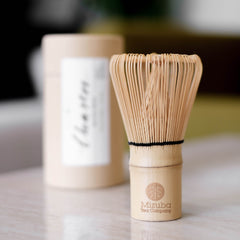
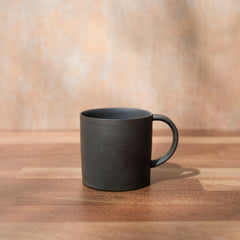
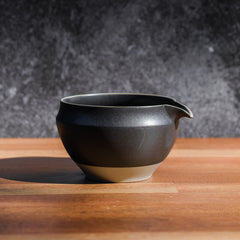
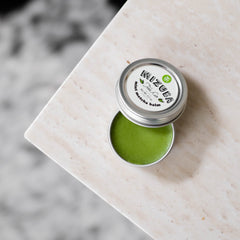
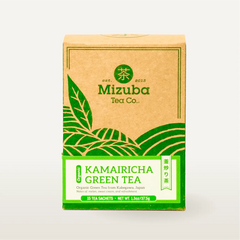


Leave a comment